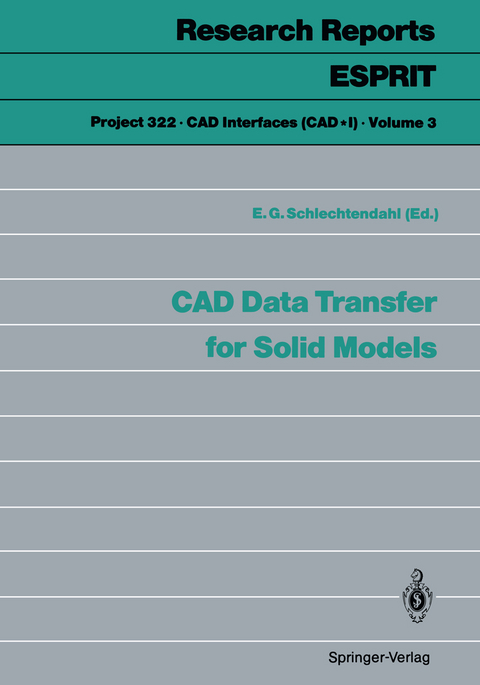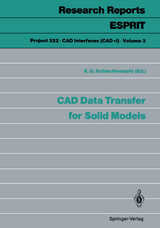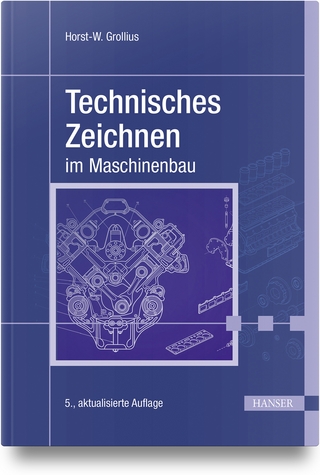CAD Data Transfer for Solid Models
Springer Berlin (Verlag)
978-3-540-51826-6 (ISBN)
Principal authors: U. Kroszynski, B. Palstr9Sm 1.1 The evolution of concepts and specifications for CAD data exchange The CAD/CAM community has witnessed, during the last decade, the appearance of several specifications as well as proposals for standards which either attempt to cover wider areas or to be more reliable and stable than the others. With the rapid evolution of both hardware and software, the capabilities offered by CAD systems and CAD based application systems are far more advanced than they were only ten years ago, even when they are now based on micro-computers or personal comput ers. The situation with standards, however, is not and cannot be so. In order to be reliable and accepted by a wide community of both vendors and users, a standard has to be sta ble. This implies a life span of at least a decade. This also implies that the standard has to be general and flexible enough to accommodate present as well as expected future developments. 1.1.1 IGES The initial development of concepts for CAD data exchange is strongly influenced by the US Integrated Computer Aided Manufacturing (ICAM) programme, that dealt with the development of methods for data exchange. In September 1979, a subgroup was estab lished with participation of the National Bureau of Standards, the General Electric Com pany, and the Boeing Company. The result of this effort was the Initial Graphics Exchange Specification (IGES) that was published as a NBS report [61] in 1980.
Project Overview.- The Transfer of Solid Models.- 1. Introduction.- 2. The CAD*I approach to solid model transfer.- 3. General implementation problems.- Specific Implementations.- 4. The CAD*I processors for Schlumberger's Bravo3.- 5. The CAD*I processors for IBM's Catia.- 6. The CAD*I processors for Matra Datavision's Euclid.- 7. The CAD*I processors for DTH's GDS.- 8. The CAD*I processors for SDRC's Geomod.- 9. The CAD*I processors for Control Data's Item.- 10. The CAD*I processors for Isykon's Proren2.- 11. The CAD*I processors for Shape Data's Romulus.- 12. The CAD*I processors for Norsk Data's Technovision.- 13. The CAD*I/STEP converters.- 14. Other implementations.- Software Development Tools and Test Parts.- 15. The CAD*I software tools.- 16. The CAD*I test parts.- International Standardisation.- 17. The interaction of CAD*I with ISO/TC184/SC4/WG1.- Transfer of CAD Files Via Computer Networks.- 18. Networks for communicating CAD information.- 19. Overview on available networks and protocols.- 20. The CAD*I network.- 21. Results of the networking experiments.- 22. The CAD*I metafile utility.- 23. Summary of network investigations.- A New Specification Technique for CAD Models.- 24. Algebraic data types: a new approach to specifying CAD models.- References.- Appendix A. Three different types of standards.- A.1 Types of standards.- A.2 Introduction to function standards.- Appendix B. List of frequently used abbreviations.
| Erscheint lt. Verlag | 29.9.1989 |
|---|---|
| Reihe/Serie | Project 322. CAD Interfaces (CAD*1) | Research Reports Esprit |
| Zusatzinfo | XVIII, 325 p. |
| Verlagsort | Berlin |
| Sprache | englisch |
| Maße | 170 x 242 mm |
| Gewicht | 622 g |
| Themenwelt | Informatik ► Weitere Themen ► CAD-Programme |
| Technik ► Maschinenbau | |
| Schlagworte | Architecture • Automation • CAD • CAD (Computer aided design) • CAD-Datenaustausch • CAD-Schnittstelle • CAD-Standardisierung • classification • Computer-Aided Design (CAD) • data structures • Design • Development • Geometric Modelling • greedy randomized adaptive search procedure • interfaces • Modeling • Motor • programming • robot • Spezifikationstechniken für CAD-Modelle • Transfer von Festkörpermodellen • Volumenmodellierung |
| ISBN-10 | 3-540-51826-6 / 3540518266 |
| ISBN-13 | 978-3-540-51826-6 / 9783540518266 |
| Zustand | Neuware |
| Haben Sie eine Frage zum Produkt? |
aus dem Bereich




